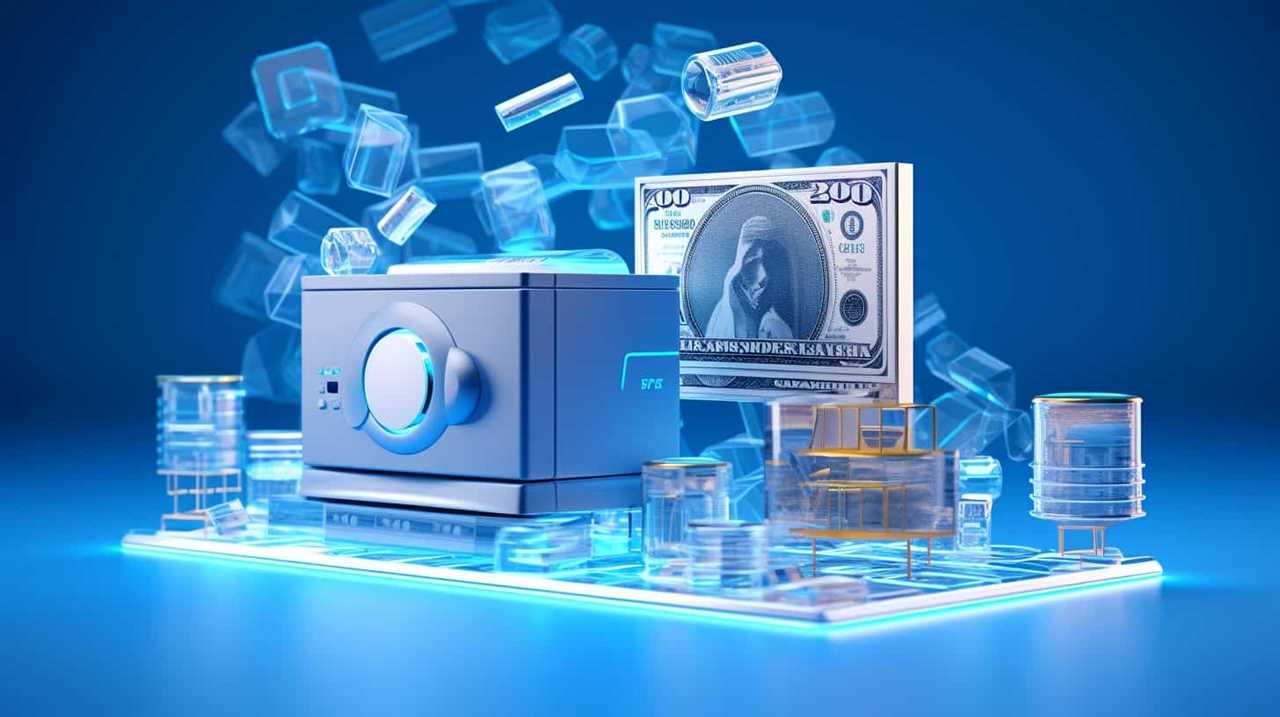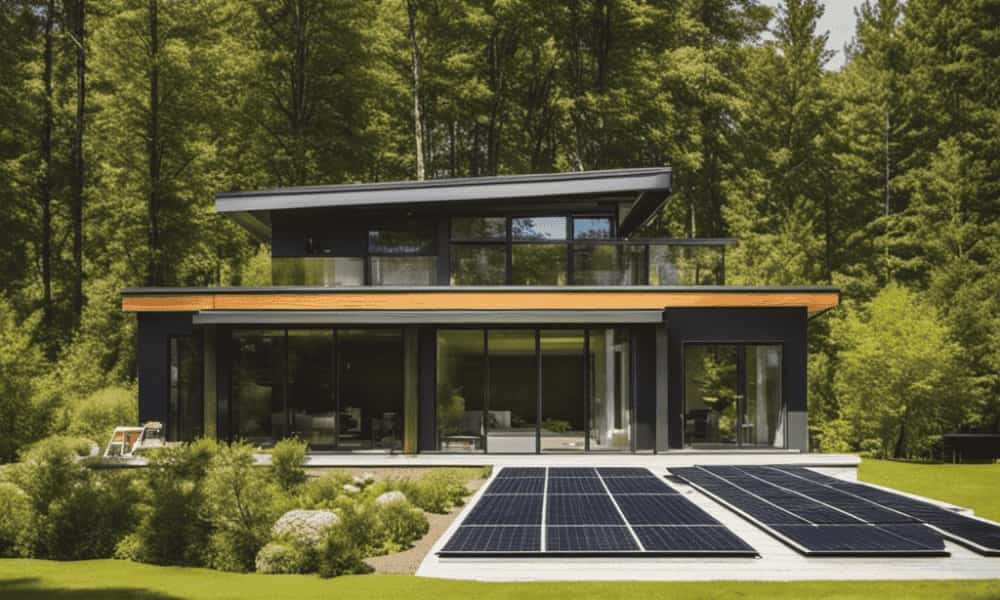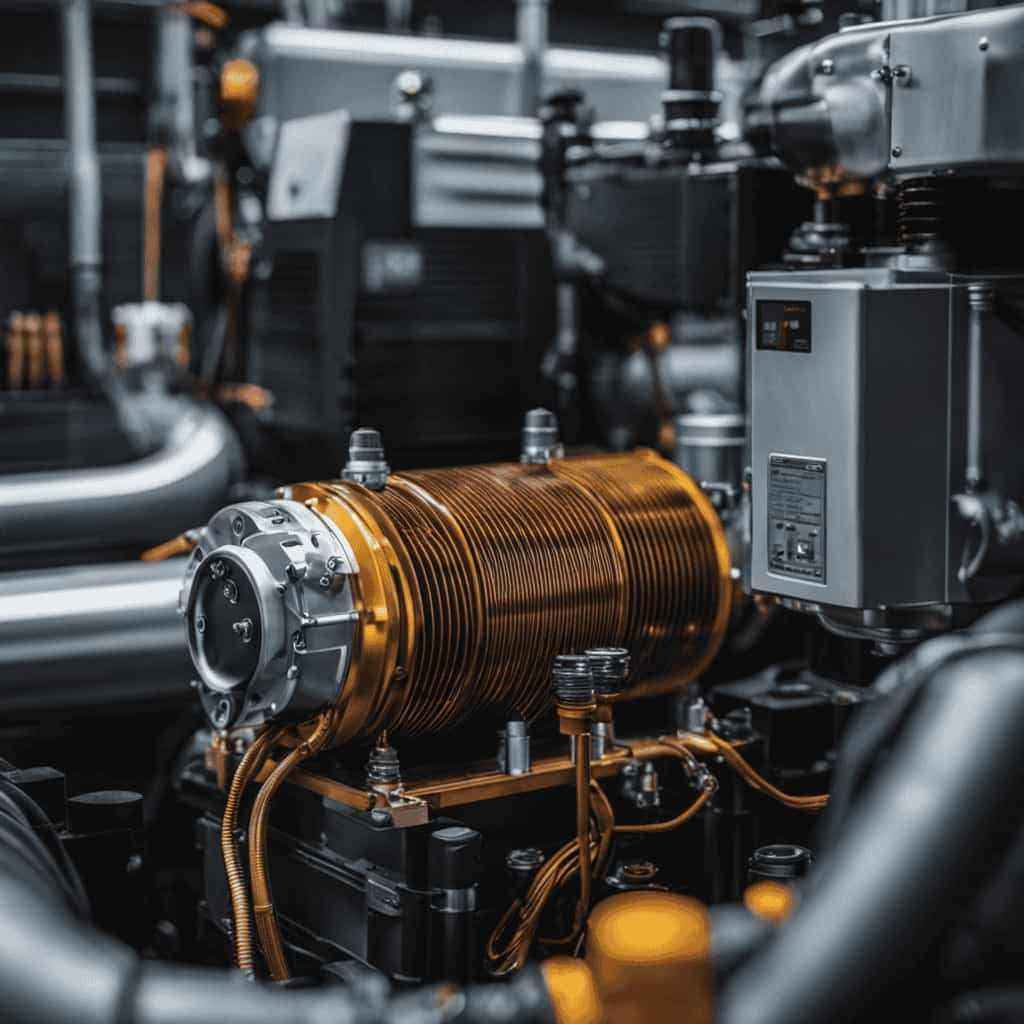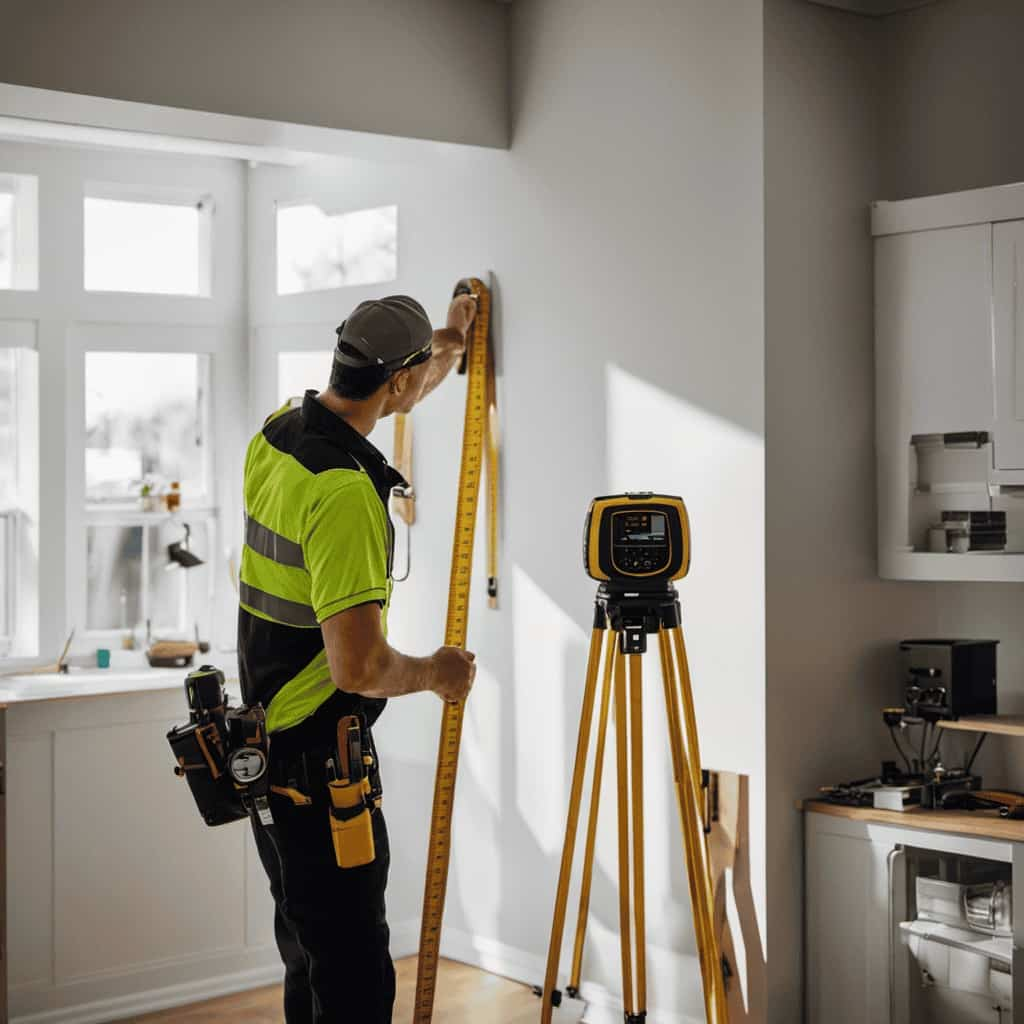Dive into the ultimate adventure of uncovering the secrets behind heat pump home heating!
We’re here to provide you with all the necessary information and insights to help you understand and embrace this innovative heating solution.
From the basics of how heat pumps work to the various types available, we’ll walk you through the process of selecting and sizing the right heat pump for your home.
Get ready to discover the world of efficient and eco-friendly heating options!

Key Takeaways
- Heat pumps provide energy-efficient home heating with higher SEER and HSPF ratings indicating more efficiency.
- Heat pumps allow for zone heating, providing personalized comfort and energy savings by only heating the rooms in use.
- Heat pumps transfer heat from one place to another using thermodynamics and key components like the compressor, condenser, evaporator, and expansion valve.
- There are different types of heat pumps for home heating, including geothermal, air source, and hybrid heat pumps, each with their own advantages.
The Basics of Heat Pump Home Heating
Let’s start by understanding the basics of heat pump home heating. Heat pump systems are innovative and efficient ways to heat your home.
One key aspect to consider is the understanding of efficiency ratings. Heat pumps have a Seasonal Energy Efficiency Ratio (SEER) and a Heating Seasonal Performance Factor (HSPF) that indicate their energy efficiency. The higher the SEER and HSPF ratings, the more efficient the heat pump. This means lower energy consumption and reduced utility bills for you.
Another benefit of heat pump home heating is the concept of zone heating. With a heat pump, you can divide your home into different zones and control the temperature independently in each area. This allows for personalized comfort and energy savings by only heating the rooms that are in use.
Understanding How Heat Pumps Work
To understand how heat pumps work, we need to know the basic principles behind their operation. Heat pump technology utilizes the principles of thermodynamics to transfer heat from one place to another. The key components of a heat pump system include the compressor, condenser, evaporator, and expansion valve.

The process begins with the evaporator, where a refrigerant absorbs heat from the surrounding air or ground. This low-temperature refrigerant is then compressed by the compressor, raising its temperature and pressure. The hot refrigerant then flows into the condenser, where it releases heat into the indoor space or water. Finally, the expansion valve reduces the pressure of the refrigerant, allowing it to return to the evaporator to repeat the cycle.
Heat pump efficiency is measured by its Coefficient of Performance (COP), which is the ratio of heat output to the electricity input. Modern heat pumps can achieve high COP values, making them an energy-efficient heating solution for homes. By harnessing the heat from the air or ground, heat pumps offer a sustainable and cost-effective way to keep our homes warm.
Types of Heat Pumps for Home Heating
There are several types of heat pumps available for home heating, and each offers its own unique advantages and disadvantages. Here are three popular types:
-
Geothermal Heat Pumps: These innovative systems extract heat from the ground and use it to warm your home. They’re highly efficient and can provide both heating and cooling. Geothermal heat pumps use the stable temperature of the earth to deliver consistent and reliable performance throughout the year.

-
Air Source Heat Pumps: These heat pumps extract heat from the outdoor air and transfer it indoors to heat your home. They’re easy to install and can be a cost-effective heating solution. Air source heat pumps are versatile and can also provide cooling during hot summer months.
-
Hybrid Heat Pumps: These systems combine the benefits of both geothermal and air source heat pumps. They use geothermal energy as the primary heat source and switch to air source heat pumps during extreme temperature conditions. Hybrid heat pumps offer increased efficiency and can help lower energy costs.
When considering heat pumps for home heating, it’s important to assess your specific needs and consult with a professional to determine the best option for your home.
Factors to Consider Before Installing a Heat Pump
First, we need to evaluate our budget and energy consumption to determine if installing a heat pump is the right choice for our home. When considering the installation cost, it’s important to factor in the initial investment as well as any ongoing maintenance and operational costs. Heat pumps generally have higher upfront costs compared to traditional heating systems, but they offer long-term savings in energy consumption and utility bills.

Additionally, it’s crucial to consider the environmental impact of heat pumps. Unlike fossil fuel-based heating systems, heat pumps utilize renewable energy sources, such as the air or ground, to provide heat. This significantly reduces greenhouse gas emissions and contributes to a more sustainable future.
Sizing Your Heat Pump for Optimal Performance
When choosing a heat pump for our home, it’s essential to accurately size the unit to ensure optimal performance. Heat pump size plays a crucial role in its efficiency and effectiveness in heating our homes.
Here are three key factors to consider when sizing your heat pump:
-
Climate: The climate in which our home is located affects the heat pump size we need. In colder climates, a larger heat pump is required to meet the heating demands efficiently.

-
Insulation: The level of insulation in our home directly impacts the heat pump size needed. Well-insulated homes require smaller heat pumps, while poorly insulated ones may require larger units to compensate for heat loss.
-
Square footage: The size of our home also determines the heat pump size required. Larger homes typically need larger heat pumps to adequately heat all the living spaces.
Energy Efficiency and Cost Savings With Heat Pumps
When it comes to heat pumps, energy efficiency is a key advantage. By relying on renewable energy sources, such as the air or ground, heat pumps can lower energy bills and provide a more eco-friendly heating option.
With their ability to transfer heat rather than generate it, heat pumps can offer significant cost savings while reducing greenhouse gas emissions.

Lowering Energy Bills
Let’s dive into how heat pumps can help us cut down on our energy bills by improving energy efficiency and providing cost savings.
Here are some energy saving tips and insulation techniques that can contribute to lower energy bills:
-
Proper insulation: Ensure that your home is well-insulated to prevent heat loss and reduce the load on the heat pump.
-
Smart thermostat: Install a smart thermostat that allows you to control the temperature and schedule heating cycles, optimizing energy usage.

-
Regular maintenance: Keep your heat pump in top condition by scheduling regular maintenance and cleaning, ensuring optimal performance and energy efficiency.
By implementing these energy saving tips and insulation techniques, you can significantly reduce your energy consumption and save on heating costs.
Now, let’s explore an eco-friendly heating option that complements these energy-saving measures.
Eco-Friendly Heating Option
Our goal is to explore how heat pumps can be an eco-friendly heating option that offers energy efficiency and cost savings.

Heat pumps are a sustainable choice for homeowners, as they utilize renewable energy sources to generate heat. By extracting heat from the air, ground, or water, heat pumps can transfer it into your home, reducing the need for traditional fossil fuel-based heating systems. This not only reduces your carbon footprint but also helps to decrease reliance on non-renewable energy sources.
In addition to being environmentally friendly, heat pumps are highly efficient, converting a small amount of electricity into a larger amount of heat. This translates into significant cost savings on your energy bills.
Proper Maintenance and Care for Heat Pump Systems
Taking regular care of our heat pump system is essential for ensuring its optimal performance and longevity.
Proper heat pump maintenance can significantly prolong the lifespan of the system, saving homeowners from expensive repairs or replacements.

Here are three important maintenance tasks to keep your heat pump running smoothly:
-
Regular filter cleaning: Clean or replace the air filters every one to three months to prevent dust and debris buildup. Clogged filters restrict airflow and reduce system efficiency.
-
Coil cleaning: Clean the outdoor and indoor coils annually to remove dirt and debris. Dirty coils hinder heat transfer and can lead to system breakdowns.
-
Professional inspections: Schedule annual maintenance checks by a qualified technician to identify and address any potential issues early on. They’ll inspect the system, check refrigerant levels, inspect electrical connections, and ensure all components are functioning properly.

Supplemental Heating Options for Cold Climates
We have several supplemental heating options available for cold climates, including electric space heaters and wood-burning stoves. However, for those seeking innovative and efficient solutions, geothermal heating and radiant floor heating are excellent choices. Geothermal heating utilizes the earth’s natural heat to provide consistent warmth throughout the home. By tapping into the stable temperature underground, this system offers high energy efficiency and reduces greenhouse gas emissions. Radiant floor heating, on the other hand, involves installing a network of pipes beneath the floor to distribute heat evenly. This method provides maximum comfort as the heat rises from the floor, eliminating cold spots and drafts. Both geothermal heating and radiant floor heating are sustainable, cost-effective, and offer a higher level of control over indoor temperature.
| Geothermal Heating | Radiant Floor Heating | |
|---|---|---|
| Energy Efficiency | High | High |
| Environmental Impact | Low | Low |
| Comfort | Consistent warmth | Even heat distribution |
| Cost | Initial investment, long-term savings | Initial investment, long-term savings |
Common Issues and Troubleshooting Tips for Heat Pumps
We have encountered several common issues with heat pumps and have compiled some troubleshooting tips to help you resolve them. Here are three common problems and their troubleshooting techniques:
-
Insufficient heating or cooling: If your heat pump isn’t providing enough warmth or coolness, check the air filters for clogs and clean or replace them if necessary. Ensure that the thermostat is set correctly and that there are no obstructions around the outdoor unit. Also, make sure that the heat pump isn’t in defrost mode, as this can temporarily reduce heating capacity.
-
Frozen coils: If you notice ice or frost on the outdoor unit, it could be due to a refrigerant leak, a dirty air filter, or blocked airflow. Check for any visible leaks and contact a professional if necessary. Clean or replace the air filter and remove any debris obstructing the unit. Additionally, ensure that the outdoor unit isn’t covered or surrounded by snow or ice.

-
Unusual noises: If your heat pump is making strange noises such as grinding, rattling, or squealing, it could indicate a problem. Check for loose or damaged components, such as fan blades or motor mounts, and tighten or replace them as needed. If the noise persists, contact a professional technician to further diagnose the issue.
Upgrading Your Home’s Heating System to a Heat Pump
To upgrade your home’s heating system to a heat pump, consider consulting with a professional HVAC technician for guidance and installation. The installation process of a heat pump involves several important steps that require professional assistance.
First, the technician will assess your home’s heating needs and determine the appropriate size and type of heat pump for your space. They’ll then carefully install the heat pump, ensuring that it’s properly connected to your existing ductwork or installing new ducts if necessary.
The technician will also set up the thermostat and ensure that the heat pump is calibrated correctly. Throughout the installation process, the technician will follow industry best practices and safety guidelines to ensure a smooth and efficient transition to your new heating system.

Once the installation is complete, you can enjoy the benefits of your upgraded heat pump.
In the next section, we’ll explore rebates and incentives available for heat pump installation, which can help offset the cost of the upgrade and increase your savings.
Exploring Rebates and Incentives for Heat Pump Installation
When it comes to installing a heat pump, there are significant financial benefits to consider. One of the main advantages is the availability of rebates and incentives that can help offset the initial costs. These rebates can come from various sources, such as government programs, utility companies, or even manufacturers themselves.
However, it’s important to note that eligibility requirements may vary, so it’s essential to research and understand the specific criteria for each rebate or incentive program.

Financial Benefits of Rebates
Taking advantage of available rebates and incentives can greatly enhance the financial benefits of heat pump installation. When considering the financial savings of heat pump home heating, it’s important to explore the various government incentives that are available. These incentives are designed to encourage homeowners to adopt more energy-efficient technologies, such as heat pumps, and can help offset the initial cost of installation.
Here are three key benefits of rebates and incentives:
-
Reduced upfront costs: Many government programs offer rebates that can significantly reduce the initial cost of purchasing and installing a heat pump. This can make it more affordable for homeowners to make the switch to this energy-efficient heating option.
-
Lower operating costs: Heat pumps are known for their energy efficiency, which means they can help homeowners save on their monthly utility bills. Additionally, some government incentives provide ongoing financial benefits, such as tax credits or lower electricity rates, which can further contribute to long-term cost savings.

-
Environmental benefits: By choosing a heat pump and taking advantage of available incentives, homeowners can contribute to reducing greenhouse gas emissions and promoting a cleaner, more sustainable future. This not only benefits the environment but also helps create a healthier living space for individuals and communities.
Eligibility for Incentives
We can explore the eligibility requirements and available incentives for heat pump installation. Incentive programs and government subsidies are an excellent way to offset the cost of installing a heat pump in your home. These programs aim to encourage homeowners to adopt energy-efficient heating systems by offering financial incentives. To help you understand the eligibility requirements and available incentives, we have provided a table below:
| Program Name | Eligibility Criteria | Incentives Available |
|---|---|---|
| Program A | Must be a homeowner | Up to $1,000 rebate on heat pump purchase |
| Program B | Must meet income requirements | 50% subsidy on installation costs |
| Program C | Must replace an existing inefficient heating system | 30% tax credit on heat pump installation |
Frequently Asked Questions
Are Heat Pumps Suitable for All Types of Homes?
Yes, heat pumps are suitable for all types of homes. They are cost-effective options that provide energy efficiency. Heat pumps can efficiently heat and cool homes, making them a versatile and innovative choice for homeowners.
Can a Heat Pump Be Used for Both Heating and Cooling?
Yes, a heat pump can be used for both heating and cooling. It efficiently transfers heat from one place to another, providing the benefits of energy savings and year-round comfort in our homes.

How Long Does a Heat Pump Typically Last?
A heat pump typically lasts around 15 to 20 years. Regular heat pump maintenance, such as changing filters and inspecting for signs of a failing heat pump, can help prolong its lifespan.
Are Heat Pumps Noisy?
Are heat pumps noisy? Yes, they can produce some noise, but advancements in technology have led to quieter operation. To further reduce noise, consider proper installation, regular maintenance, and selecting models with low noise levels.
What Is the Average Cost of Installing a Heat Pump in a Home?
The average cost of installing a heat pump in a home can vary depending on factors such as size, type, and location. However, it is important to consider the long-term cost comparison and energy efficiency benefits of heat pumps.
Conclusion
In conclusion, heat pump home heating offers an efficient and eco-friendly solution for keeping your home warm.

By understanding how heat pumps work and choosing the right type and size for your home, you can optimize their performance.
Additionally, considering supplemental heating options for colder climates and being aware of common issues and troubleshooting tips will ensure a smooth heating experience.
Upgrade your heating system to a heat pump and explore the rebates and incentives available for a cost-effective and sustainable solution.









